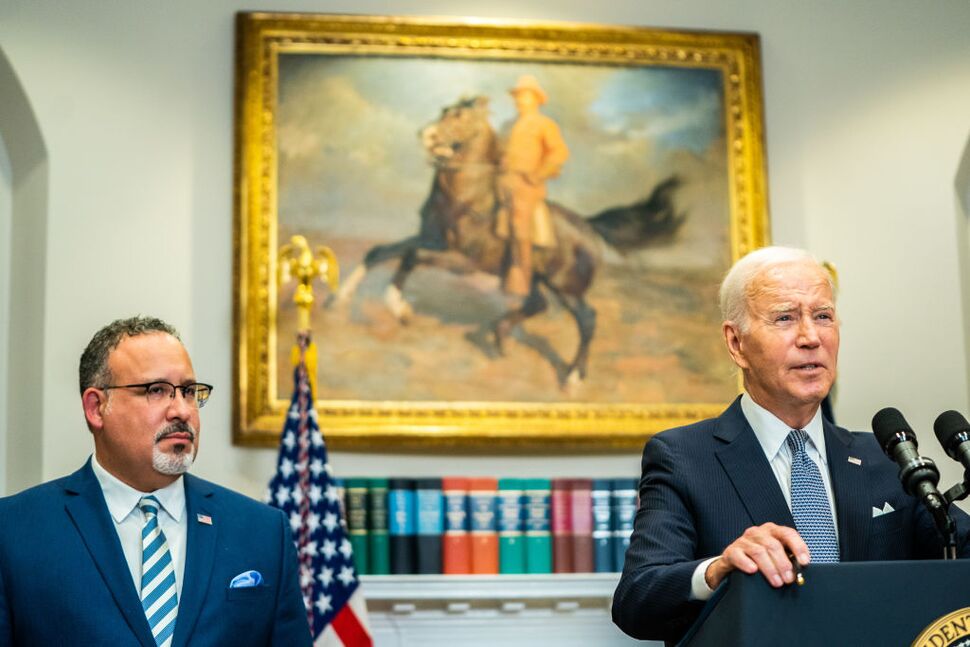The Education Department announced a new plan to provide debt cancellation for potentially five groups of student borrowers after broader loan forgiveness was halted by the Supreme Court.
The Biden administration is moving forward with a new path to provide large-scale student loan debt cancellation in the wake of a Supreme Court ruling this summer that struck down President Joe Biden’s controversial debt relief plan.
The Education Department announced Friday that it’s set to begin the formal regulatory process in October to provide debt cancellation for potentially five groups of student loan borrowers – a lengthy process that involves a panel of negotiators who will meet over several months to try to reach a consensus.
The five groups of borrowers department officials are targeting include borrowers whose balances are greater than what they originally borrowed, borrowers whose loans first entered repayment decades ago, borrowers who attended programs that did not provide sufficient financial value, borrowers who are eligible for relief under programs like income-driven repayment but have not applied, and borrowers who have experienced financial hardship and need support but for whom the current student loan system does not adequately address.
“The Biden-Harris Administration has taken unprecedented action to fix the broken student loan system and deliver record amounts of student debt relief,” Education Secretary Miguel Cardona said in a statement. “Now, we are diligently moving through the regulatory process to advance debt relief for even more borrowers. Today, after considering more than 26,000 public comments on how to tailor this relief, we are releasing this additional information about this effort.”
The 14-member panel will meet Oct. 10 and Oct. 11, and again in November and December before the Education Department issues its proposed changes to regulations in the Higher Education Act that would allow the loan cancellation. The public will have an opportunity to comment before those rules are finalized, which administration officials expect to occur as soon as spring of 2024.
“We want to explore what potential types of hardships borrowers face and how the department might deliver relief to those borrowers under the Higher Education Act,” Undersecretary James Kvaal told reporters on Friday. “We will also listen to the ideas brought forward by the negotiators.”
Notably, the announcement comes as student loan payments are scheduled to restart on Oct.1 for the first time since they were paused at the outset of the COVID-19 pandemic.
Despite the Supreme Court’s block of the president’s sweeping student loan cancellation plan earlier this summer, providing debt relief to borrowers has been one of the administration’s biggest policy wins during Biden’s first term – and one the Biden-Harris campaign is prepared to tout heading into the 2024 presidential election.
As it stands, the Education Department has approved $117 billion in relief to more than 3.4 million borrowers, including $39 billion for borrowers who were eligible for relief after fixing long-standing problems with income-driven repayment plans, $45.7 billion for borrowers who were eligible for relief after fixing long-standing problems with public service forgiveness plan, $10.5 billion for borrowers who became disabled, $22.4 billion for borrowers who were defrauded by their schools or whose schools suddenly closed without warning.
The news is the latest in a series of major higher education announcements by the Education Department this week, including the finalized rule for how for-profit colleges must prove their graduates are gainfully employed and earning enough to pay back their debt in order to be eligible to receive federal student aid, and a blueprint for colleges and universities seeking to continue using race in their admissions process in the wake of the Supreme Court ruling that barred the use of affirmative action.



